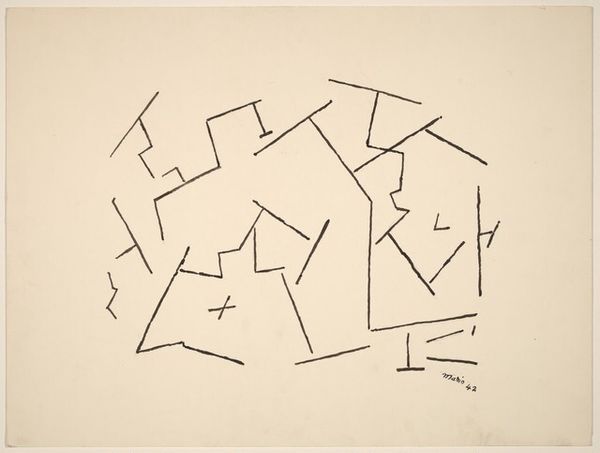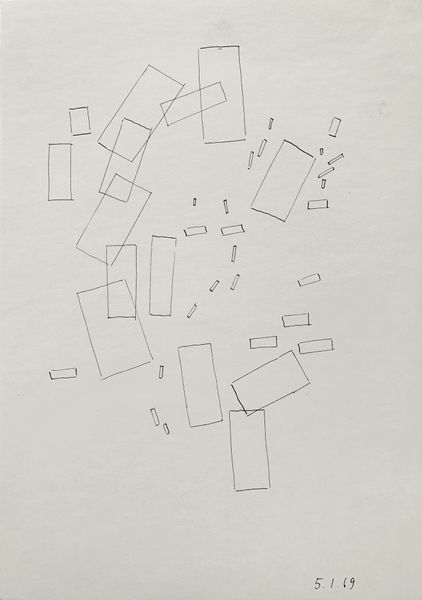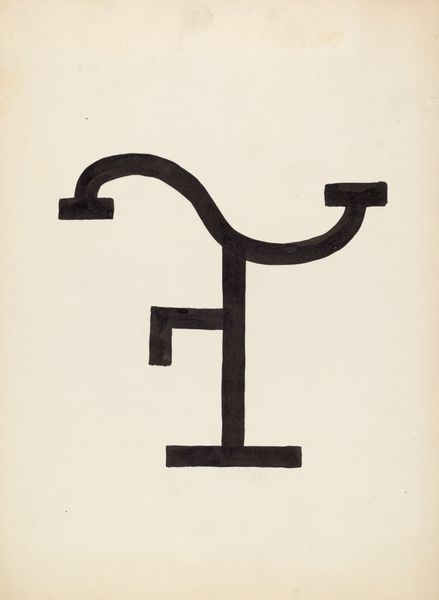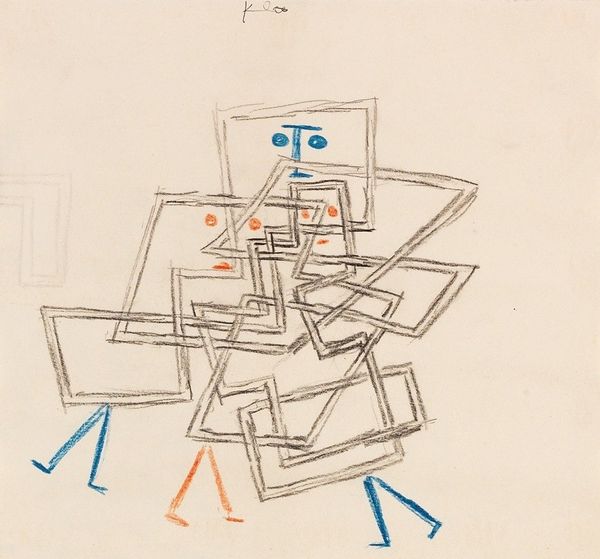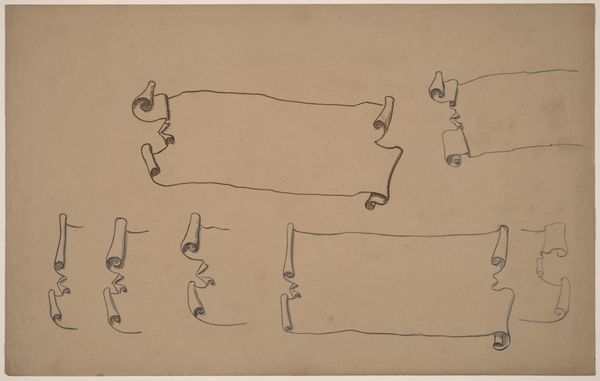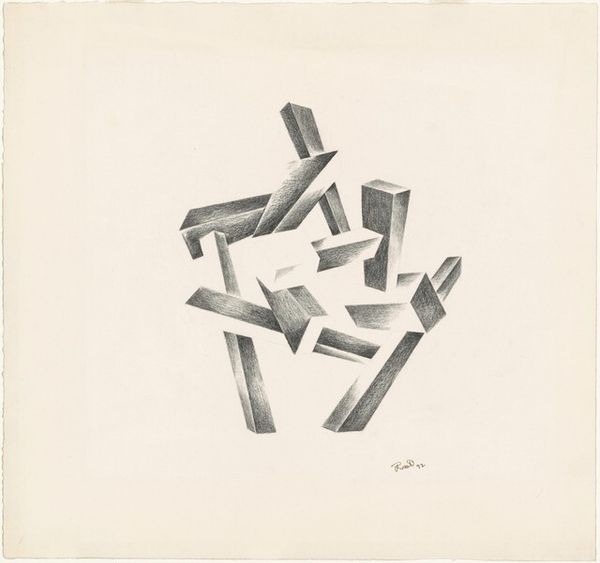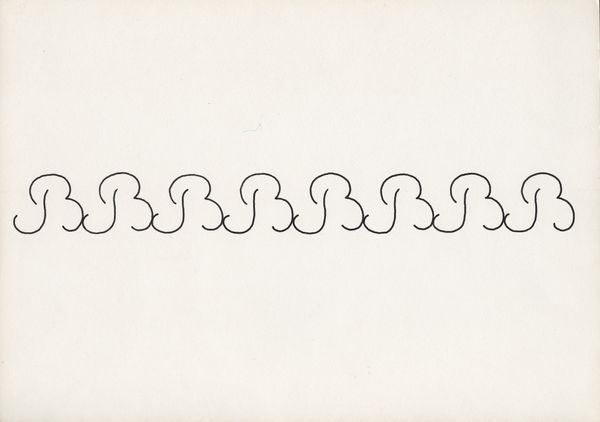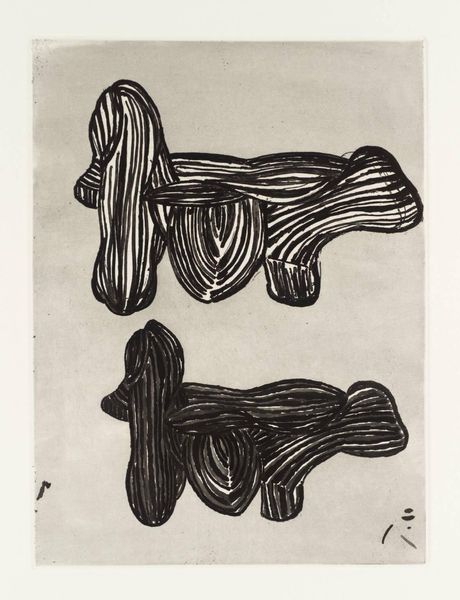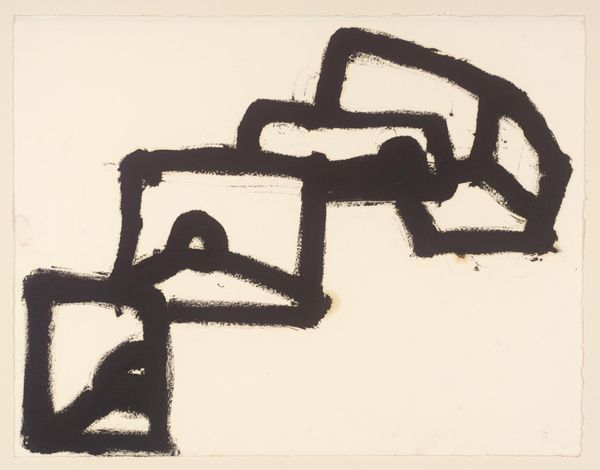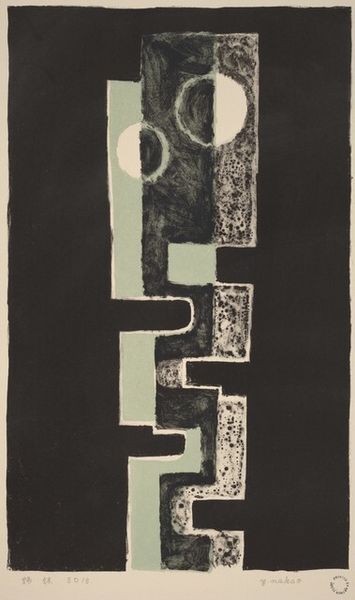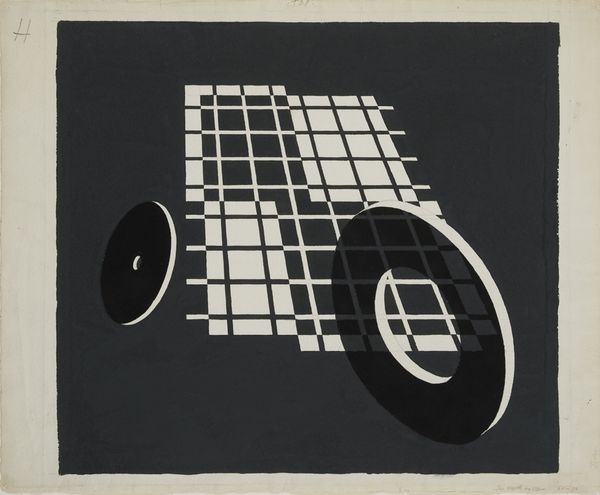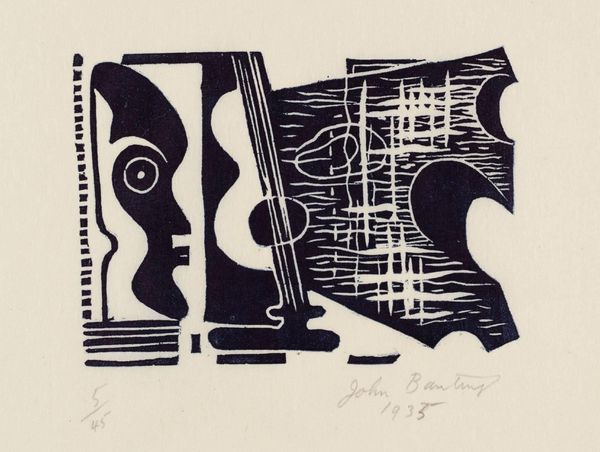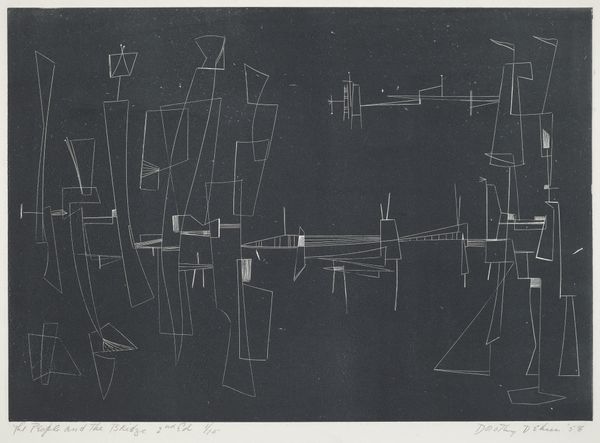
drawing
#
abstract-expressionism
#
drawing
#
form
#
geometric
#
abstraction
#
line
Dimensions: sheet: 35.08 × 42.7 cm (13 13/16 × 16 13/16 in.)
Copyright: National Gallery of Art: CC0 1.0
Curator: This "Untitled" piece, created by Ibram Lassaw in 1967, really draws you in with its deceptively simple arrangement of abstract forms. It's a work on paper, primarily utilizing the contrast between the stark black lines and the off-white ground. Editor: My immediate impression is a sort of visual language. It's as if I’m looking at glyphs, maybe an alphabet from a civilization we’ve never encountered. They're geometric, yes, but the rounded corners give them a softer, almost organic feel. Curator: Lassaw was deeply involved in Abstract Expressionism, though this feels like a later, perhaps more refined exploration of those ideas. Consider how abstraction can be a powerful means to disrupt traditional visual narratives, a way of resisting dominant modes of representation. How do you see this piece fitting in or pushing back against its historical context? Editor: The symbol set suggests so much that goes unspoken. Each individual piece seems designed to be part of a whole—though I cannot decipher what the relationship is or should be. This approach leaves me with questions. What does it mean to form or be forced to be part of one? Curator: Precisely, and that interplay between the individual and the collective is crucial. This work emerged during a period of intense social upheaval and questioning of established norms, so perhaps these forms are representative of fragmented identities seeking cohesion within a fractured society. Editor: The repeated shapes might even signify echoes of communal ritual or, depending on how you interpret the stark lines, possibly a commentary on restriction and barriers? Each object carries within it some internal structure and is given its own isolated existence on this plane of existence, creating new internal versus external symbolisms. Curator: Indeed, and by stripping away recognizable imagery, Lassaw invites us to project our own interpretations onto these forms, forcing us to confront our own assumptions about identity, representation, and meaning-making within systems of power. Editor: Art at its finest is supposed to present this ambiguity. If it all makes perfect sense right away, what's the point of spending time engaging with the message. A simple, pure black ink line opens up an entire realm of interpretation. Curator: Thank you, your insights resonate deeply and offer further reflection points when experiencing Lassaw's work. Editor: It was a pleasure examining the various meanings layered into what seemed initially to be simple artistic statements.
Comments
No comments
Be the first to comment and join the conversation on the ultimate creative platform.
